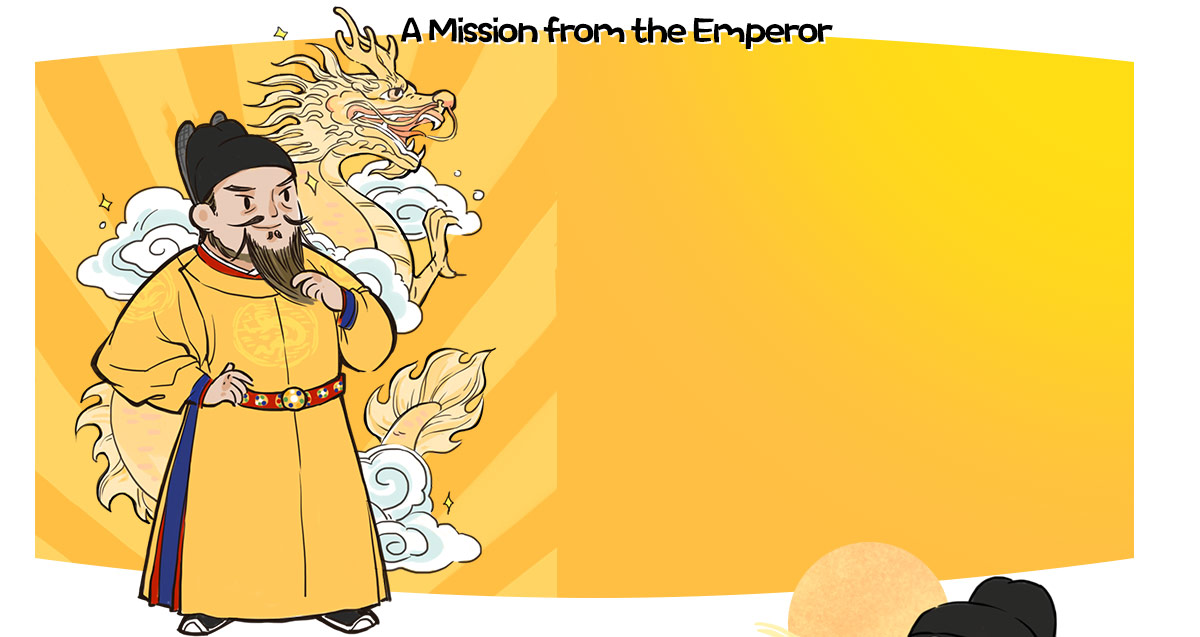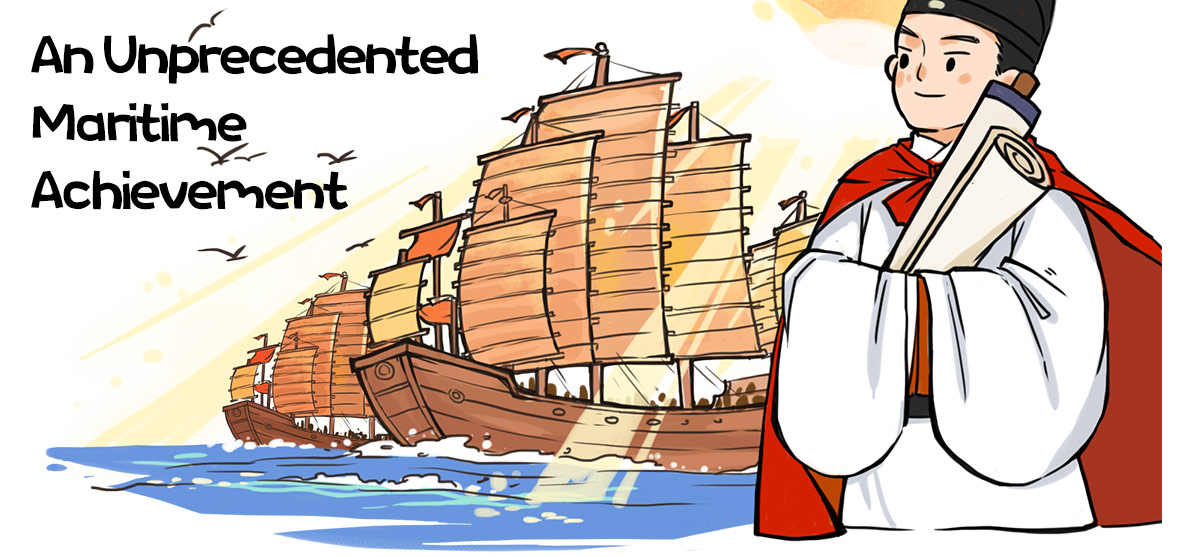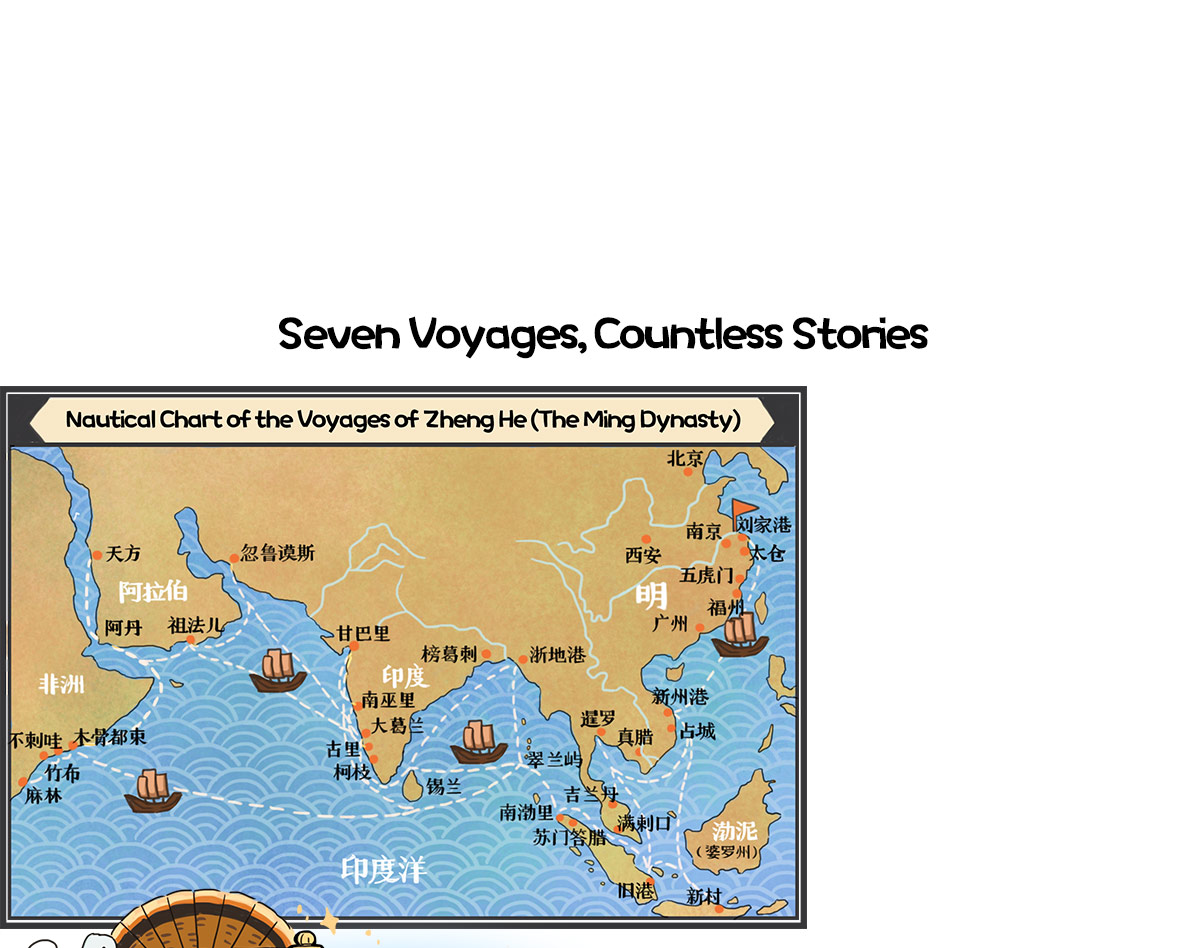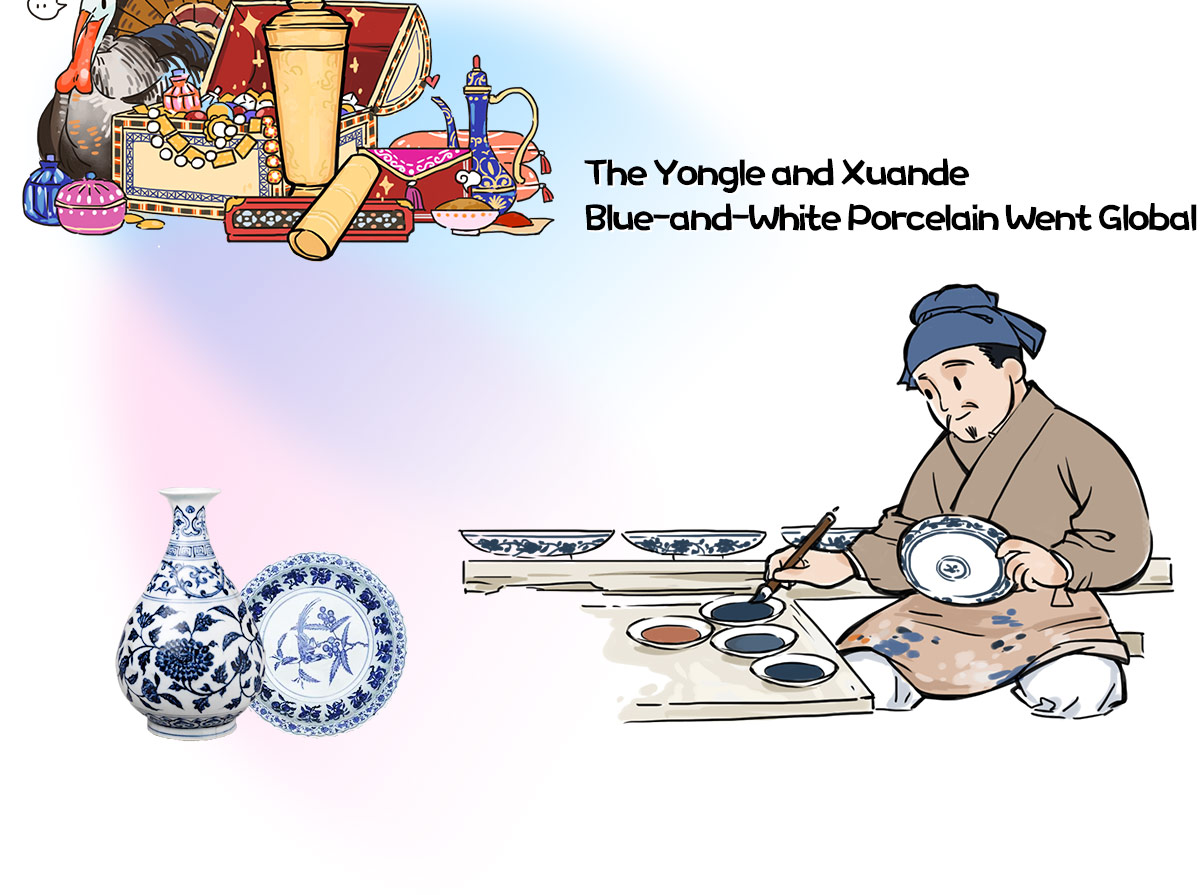You may know these names: Magellan, who sailed around the world; Columbus, who discovered the Americas; and Vasco da Gama, who pioneered the route to the Cape of Good Hope. But did you know that 88 years before Columbus crossed the Atlantic to the West Indies, 93 years before Vasco da Gama reached India, and 114 years before Magellan set out to circumnavigate the globe, there was a Chinese navigator and diplomat who led the most extensive, enduring, and well-equipped maritime expeditions of his time? His name was Zheng He.
Who was Zheng He? And what is the “Spirit of Zheng He” often mentioned in China’s Belt and Road Initiative? To answer this, we must start with a task assigned by Emperor Yongle (r. 1402–1424) of the Ming dynasty (1368–1644).In June of the third year of the Yongle reign (1405), the eunuch Zheng He was summoned to an audience with Emperor Yongle, who said to him, “Since my enthronization, I have spread the influence of our great empire far and wide. Japan and Korea have already sent envoys to pay tribute, but there has been no contact with the Western Oceans. I plan to send you to establish relations there. Do you understand?” Zheng He replied, “I understand and shall obey, Your Majesty.” He knew that the emperor hoped to forge ties with the nations of the Western Oceans, to let them witness the prosperousness and power of the Ming dynasty, and to engage in trade, bringing back exotic treasures.
Why did the emperor choose Zheng He? Zheng was a trusted aide. His father had passed away when Zheng He was young, and he came to serve as a eunuch in Prince Zhu Di’s residence (before Zhu Di became Emperor Yongle). He won the emperor’s favour and trust thanks to his talent and reliability.Zheng He’s fleet boasted the most advanced ships and navigation techniques of the time. The fleet consisted of 62 large ships and 255 smaller vessels, including treasure ships, warships, large battleships, supply ships, and water carriers. The largest treasure ship, used for transporting valuable goods, measured approximately 140 metres in length and 60 metres in width, with a displacement of nearly 10,000 tons, making it the world’s largest wooden ship, a record that held until the late 19th century. By comparison, the ships of Columbus, Vasco da Gama, and Magellan were merely one-hundredth the size of Zheng He’s grand vessels. Beyond the impressive ships, Zheng He’s fleet was well-staffed, including officers, militaries for water transport, warriors, pilots, helmsmen, craftsmen for repairing weapons and equipment, interpreters, envoys, doctors, cooks, and over 27,000 people in total, along with ample supplies of firewood, rice, oil, salt, and trade goods such as gold, silver, copper coins, silk, brocade, porcelain, and ironware.
From 1405 to 1433, fulfilling the emperor’s command, Zheng He spent 28 years travelling seven times between China, Southeast Asia, the Arabian Peninsula, and the eastern coast of Africa. Altogether, his voyages covered over 70,000 nautical miles, equivalent to circling the Earth three times. His furthest destination was the Red Sea area along the eastern coast of Africa.
Along the way, Zheng He and his fleet visited many countries and encountered numerous legendary adventures. He fought pirates in Old Port (today’s Palembang, Indonesia); with the support of the local king, he established a transit station in Malacca at the crossroads of the South China Sea and the Indian Ocean, where he built warehouses and barracks, creating a base for future voyages; in Sri Lanka, he uncovered a plot by the local king to ambush the fleet and seize the treasure ships. Most countries welcomed Zheng He with open arms, though he occasionally faced misunderstandings, hostility, or cold receptions. Yet, as a messenger of peace, neither he nor his crew ever flaunted their power, seized foreign lands, nor imposed their will on others by force. Despite having towering treasure ships, they refrained from exploiting others; with the unmatched strength of the Ming empire, surpassing even the glory of the Han (202 BCE-220 CE) and Tang (618-907) dynasties, they resisted any urge to take advantage. On his expeditions, Zheng He spread culture, promoted trade, supported the vulnerable, and ensured peace from the Strait of Malacca to the Indian Ocean, the Persian Gulf, and the South China Sea—a golden era for all lands. This harmony and goodwill exemplify the “Spirit of Zheng He” we speak of today.Did you know that the development of blue-and-white porcelain itself benefited from Zheng He’s voyages? Among the local goods he brought back was a pigment called “Samarra Blue,” along with other coloured glazes. With these imported materials and the meticulous craftsmanship of porcelain makers, blue-and-white porcelain flourished in the Yongle and Xuande reigns, representing the peak of China’s porcelain artistry—the Yongle and Xuande blue-and-white porcelain.
Look, during the peak of the Ming Empire's prosperity, the great navigator Zheng He undertook seven voyages to the Western Oceans, bringing with him the brilliance of Chinese culture and building bridges of friendship between China and nations in Asia and Africa.



